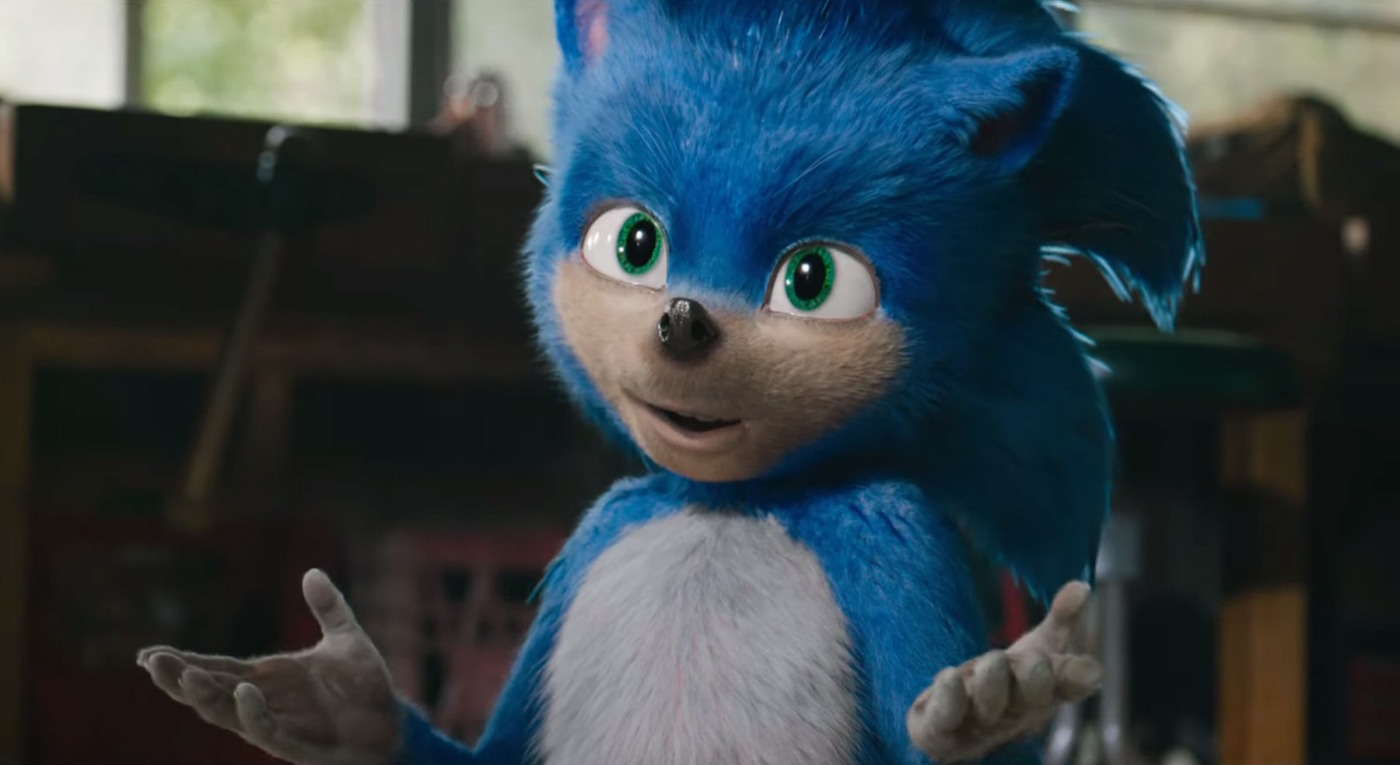Sonic the Hedgehog could win glow-up of the year
When Paramount Pictures released their art for the upcoming Sonic the Hedgehog movie, I imagine they didn’t expect to receive intense, passionate rage from the general public in response. However, that’s what they got. The reaction to the original manifestation of the childhood game icon was largely one of disgust. The disproportionately tiny eyes were slightly unnerving, the fur in strange high definition and the unsettling fear caused by those teeth defied description. Given the mass outrage it sparked, it’s no surprise that Paramount have since done a tactical redesign, giving Sonic a glow-up I’m quite frankly jealous of.
It’s easy to say that the producers realised they had created a disgraceful first attempt and so the redesign was just a logical. However, the fact that the designers of the character responded to feedback to enact the change gives an interesting insight into the role of the audience in the film industry. The voice of the observer is clearly a valued one, and there could be several reasons for this.
The disproportionately tiny eyes were slightly unnerving, the fur in strange high definition and the unsettling fear caused by those teeth defied description
Firstly, the obvious: films need to make money. With the horrifying original Sonic clearly not destined to become a fan favourite, the dollar signs spinning in the eyes of producers would have ground to a halt. Making changes in response to what an audience’s first impressions are makes sense when they’re the ones who will buy tickets and pay salaries.
The nostalgic element of the film could also play a part in the change. Sonic the Hedgehog occupies a prime spot in the sentimental nostalgia of the millennials-to-Gen Z generation’s collective childhood. In fact, films that tap into the topics of our childhoods is a theme that seems particularly prevalent at the minute. For example, live action Disney remakes are being churned out in quick succession and the Nintendo games of our tween years are slowly resurrecting, making the transition from DS Lites to smartphones.
With the horrifying original Sonic clearly not destined to become a fan favourite, the dollar signs spinning in the eyes of producers would have ground to a halt
It may be a reflection of the emotionally unstable present state of society that we seem to be buying into these reminders of simpler times, but the tactic is working. Trying to embody that wistful nostalgia within a film to appease the now ‘grown-up’ fans is a difficult feat. Anything that threatens that nostalgia is, as we saw here, shot down. As such, it’s in the interests of Paramount Pictures to spend the money needed to change the design rather than face the wrath of a collective group they just ruined the childhoods of when the film is released.
If we are to look at the situation more optimistically, the change could even suggest that filmmakers do actually care about their audience. Producers, designers and the rest of the crew are, after all, pursuing a creative passion and so the opinion of their intended audience could mean a lot to them. Being approved by the fellow film-lovers they’re aiming to please validates their hard work. So, the redesign could point towards an industry that truly values its consumers: one that holds the happiness of their audience beyond even the money they symbolise as a vital part of the system.
It’s quite ironic that in the midst of huge political turmoil causing divides across communities, there’s nothing like the butchering of an animation of a blue hedgehog to bring the internet together
Beyond the topic of Sonic the Hedgehog specifically, the role of the internet in allowing fans an active voice to express views is a huge part of determining the success of films. Whether it is to draw attention to an upcoming film that could be problematic in a way that isn’t immediately obvious, exposing unethical practises during filming (like in the case of A Dog’s Purpose) or calling out the white/straightwashing of characters as Scarlett-Johansson-gate demonstrated, the audience discourse is perhaps more important than ever. However, it transpired that the outrage over alleged animal cruelty on the set of A Dog’s Purpose was entirely misinformed according to an actor who worked on the movie, who said he “never saw any abuse of any animal. And if there had been, [he] would have walked”. The internet is often quick to escalate topics that aren’t objective fact and people tend to make assumptions based on snippets of information taken out of context, as seemed to be the case in this situation. Watching or appreciating a film has become an increasingly interactive experience and just as social media hype about a particular franchise can boost the capital it produces, it can also be damning.
The voice of the audience is clearly an important one. Whether it’s used to articulate dissent against a problematic aspect of a film or to add to the growing discourse of just how horrifying that original Sonic was, film companies are being forced to acknowledge the thoughts of their audience and adapt accordingly. If nothing else, it’s quite ironic that in the midst of huge political turmoil causing divides across communities, there’s nothing like the butchering of an animation of a blue hedgehog to bring the internet together. Whether that’s quite a poignant sentiment or actually just concerning is still up for debate.

Comments